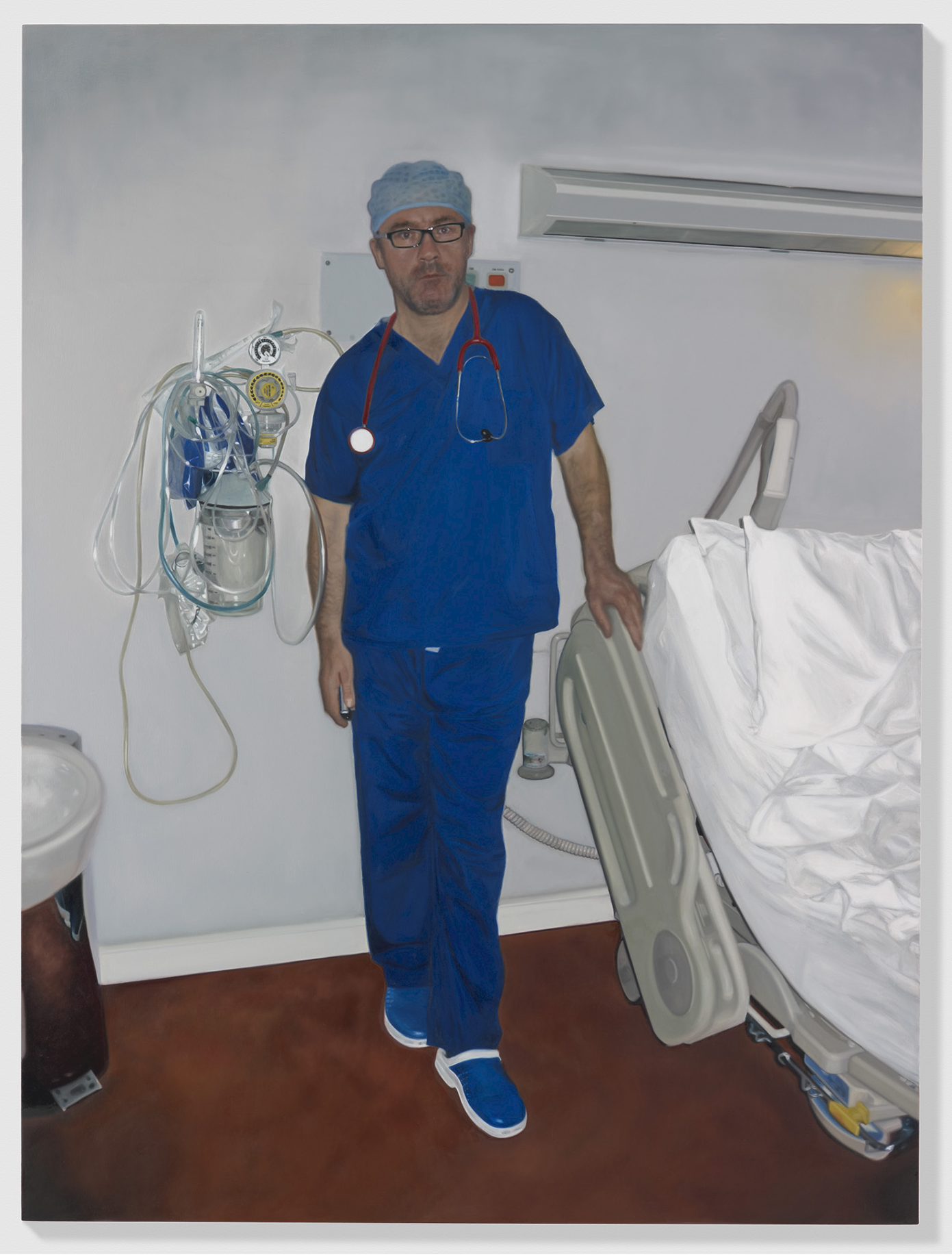
It’s not often that a gallery—especially one with “mega” status—hands over an entire space to a single artist for a year. But such is the star power of Damien Hirst that Gagosian invited the British artist to take over its Britannia Street gallery, one of its three London spaces, this year—and Hirst is poised to start with a bang.
When London’s lockdown restrictions lift on April 12, Hirst will unveil a series of (mostly) never-before-seen “Fact” paintings and sculptures that he has been making over the past 15 years.
The wide-ranging subject matter runs the gamut from global events, such as a hyper-realistic, photo-based painting of the horrific fire that engulfed Paris’s Notre Dame cathedral in 2019, to re-introducing elements from past series, such as butterflies and cow heads, to scenes from his personal life, such as the birth of his son, to attending snooker tournaments with his friend, snooker champ Ronnie O’Sullivan.
Damien Hirst, Notre-Dame on Fire (2019). © Damien Hirst and Science Ltd. All rights reserved, DACS 2021. Photo: Prudence Cuming Associates. Courtesy of Gagosian.
“We are giving him free rein to express his work in ways that he wants the public to see them in the space,” Gagosian director Millicent Wilner, who is Hirst’s gallery liaison, told Artnet News. “It’s a pretty organic and creative process for him.”
One of the earliest works in the series, from 2005, is a depiction of a bull’s head, which is an element from one of his sculptural pieces. There is also butterfly imagery—a common theme in Hirst’s work—appearing now in oil paintings based on close-up photos of butterflies. (When Gagosian opened its Hong Kong gallery more than a decade ago, the inaugural show was of Hirst’s butterfly paintings.)
Damien Hirst, Papillio palinurus in Achillea millefolium, (2009). © Damien Hirst and Science Ltd. All rights reserved, DACS 2021. Photo: Prudence Cuming Associates. Courtesy of Gagosian.
The “Fact” paintings mix photo-based natural history with references to Hirst’s previous work, says Wilner. “Damien has been fascinated with this idea of representing reality. You have reality, then you have a photographic representation of reality, and then you have these beautiful, painstakingly created paintings, made over a period of time,” she says.
Viewers will also recognize a riff on one of the most sensational works of Hirst’s career: A diamond-encrusted skull he produced in 2008, titled For The Love of God, which reportedly sold at the time for £50 million ($100 million) to a consortium that included the artist himself.
Damien Hirst, French Nuclear Test, Licorne (2010). © Damien Hirst and Science Ltd. All rights reserved, DACS 2021. Photo: Prudence Cuming Associates. Courtesy of Gagosian.
In the upcoming show, a painting of artist Michael Craig-Martin holding the skull, on loan from Craig-Martin himself, pays tribute to that moment in time, when the global economic crisis was hitting a peak.
For better or for worse, Hirst, and his art-market ascent, is inextricably linked with the crisis. On the same day that Lehman Brothers filed for bankruptcy, 223 works that Hirst had consigned directly to Sotheby’s London, generated just shy of $201 million in sales, exceeding the high presale estimate by $24 million.
Damien Hirst, Warsaw (2008). © Damien Hirst and Science Ltd. All rights reserved, DACS 2021. Photo: Prudence Cuming Associates. Courtesy of Gagosian.
Wilner says some of the works have taken on new layers of meaning, such as a depiction of a cabinet with medical and surgical equipment that, when initially created, reflected Hirst’s obsession with science and medicine, but now immediately connotes the pandemic-related PPE which has become part of our everyday consciousness.
Other sculptures draw connections to “readymades,” such as a life-size “tea cart,” a fond reference to a fixture at the snooker tournaments Hirst frequently attends. Here, Hirst is once again “playing with high and low,” says Wilner. A snooker tournament tea-cart Is “not something that would normally be in the art gaze, or re-created to scale in the gallery.”
Taken together, the series on view amount less to a retrospective history of Hirst’s work than to a new interpretation of their linkages. “As a viewer you think of these as different series, but in Damien’s mind there is a very clear lineage,” says Wilner. Hirst is “re-presenting works through his eyes.”